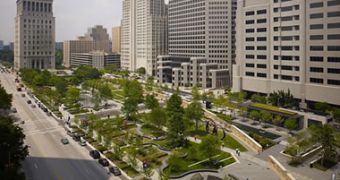According to a new report put together by the United Nations Environment Programme, the people in charge of overseeing urban expansion must do their best to integrate environmental protection into their plans for the development of human society.
This is because pushing for biodiversity conservations in the context of growing cities will yield significant benefits not just from an environmental standpoint, but also from an economical one.
To cut a long story short, unless the urban areas of the future accommodate for rather large patches of vegetation, public health runs significant risks.
This is because, as most people already know, green spaces do a great job when it comes to absorbing carbon dioxide and filtering dust.
In other words, they are of utmost importance as far as air quality is concerned.
As well as this, by making sure urban areas integrate such ecosystems, progress will most surely be made in terms of keeping various animal species from falling off the biodiversity map.
“Cities need to learn how to better protect and enhance biodiversity, because rich biodiversity can exist in cities and is extremely critical to people's health and well-being,” explains Professor Thomas Elmqvist, presently working with the Stockholm Resilience Center.
The UN Under-Secretary General, Achim Steiner, backs up this statement and makes a case of how, “Sustainable urban development that supports valuable ecosystems presents a major opportunity for improving lives and livelihoods, and accelerating the transition to an inclusive green economy.”
Interestingly enough, it seems that tree canopies in several cities in the UK have successfully brought down ambient temperatures by roughly 3-4 degrees Celsius, and that health conditions such as asthma and allergies are more frequent in people who do not live close to vegetation.
We have previously reported on how, according to estimates, the global urban area is to triple in size by the year 2030, impacting on biodiversity and upping average temperatures worldwide.
However, it is quite likely that, should urban planners give due consideration to these new UN guidelines, some damage control can be done.

 14 DAY TRIAL //
14 DAY TRIAL //